“They’re such beautiful shirts,” she sobbed, her voice muffled in the thick folds. “It makes me sad because I’ve never seen such – such beautiful shirts before.” -The Great Gatsby
My original interest in doing this series was to track down “Golden Era” Brooks Brothers OCBDs and see how one of the most classic American clothing designs has evolved over the last hundred years or so. Finding old Brooks shirts hasn’t been easy, however. Brooks Brothers, at least to my knowledge, doesn’t have a clothing archive like Levis or Gant, so I’ve had to track down deadstocks and vintage pieces owned by collectors and enthusiasts. I found mine through Ethan at O’Connell’s, Mariano at Typhoid Jones, and Giuseppe at An Affordable Wardrobe. What they sent me collectively represents about 75 years of Brooks’ OCBD history, which has rarely been seen together before.
To understand why the OCBD became popular, you only need to know what men used to wear before it was invented. Here we see one of Brooks Brothers’ detachable collar shirts and accompanying collars from the early 20th century. The shirt is made from cotton, but the collar is made from linen, cardboard, and various composite materials. It’s difficult to tell from a photograph, but the collar is very, very stiff (you can kind of infer this from the fact that it’s standing up so straight on my table). In the hand, it feels something like thick, heavy cardstock.

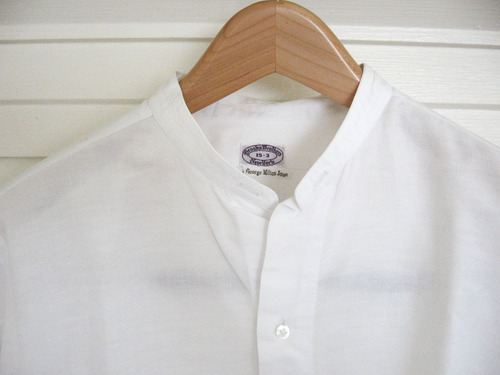
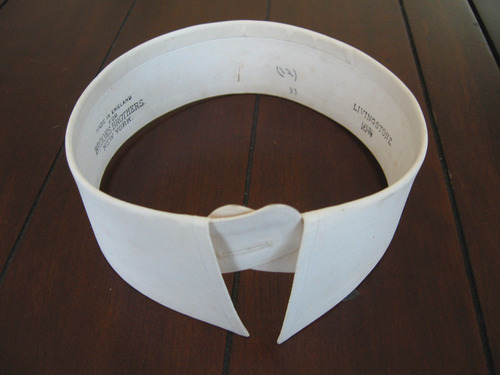
In the 19th and early 20th centuries, men wore detachable collar shirts because clothing was still handmade and very expensive, so they wanted to preserve their shirts for as long as possible. Since most men wore undershirts, the parts of the dress shirt that would get worn down the most were the parts that came in contact with the skin – that is, the collars and cuffs. Having these detachable not only meant they could be more easily laundered and ironed, but also that they could be replaced without having to buy an entirely new shirt. Sometimes women of a household would make these collars, but you can tell this one was store bought because of the stamping inside.
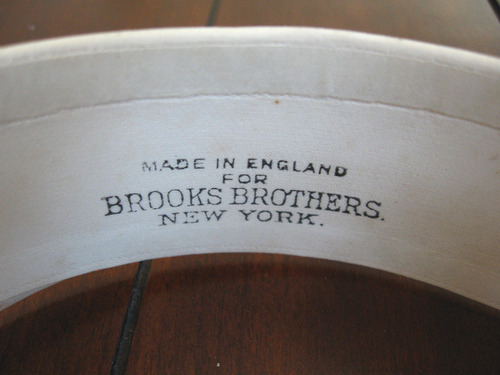
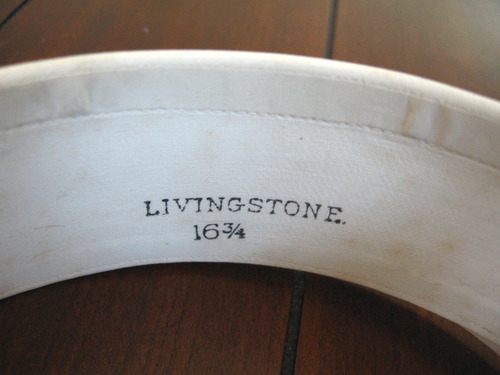
The high, stiff collar, however, was very uncomfortable, as you can imagine. So when Brooks introduced a ready-made, soft collar shirt, it was instantly popular. The earliest versions were something like a long-sleeved pullover shirt, as you see here.
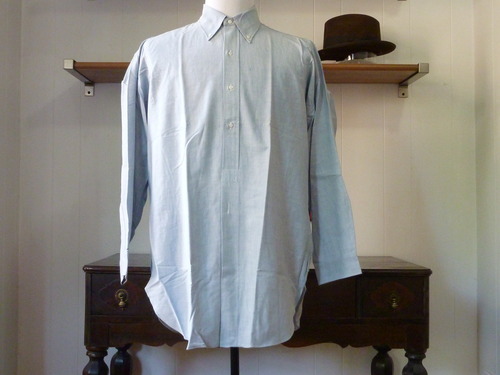
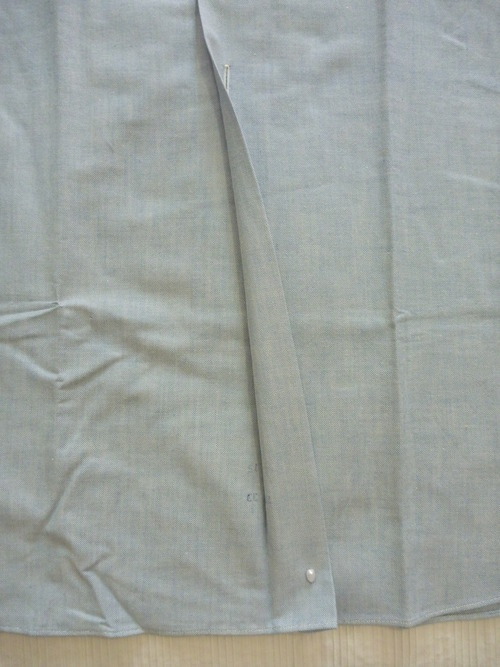
These were, after all, originally meant to be sport shirts, so they were more casual in nature. Eventually however, Brooks introduced a five button “coat style” shirt, and then later replaced it with a six-button. A “coat style” is what we’re most familiar with today – the full front of the body opens up like a coat, and then is secured again with buttons.
This is an example of a six button coat-style OCBD, which dates back to 1949. Two things to note: the absence of a chest pocket and the presence of a side gusset at the hem. All of the early versions of Brooks’ shirts – OCBD or not – seem to be like this, but as we’ll soon see, a pocket was later added and the gusset was taken out.

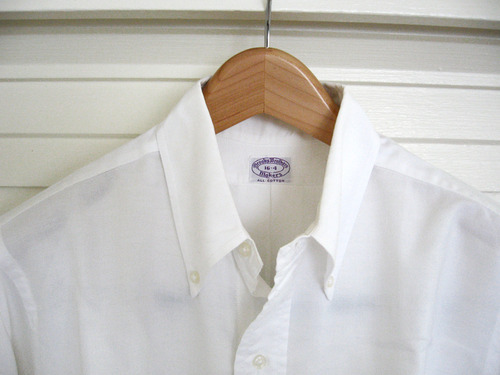
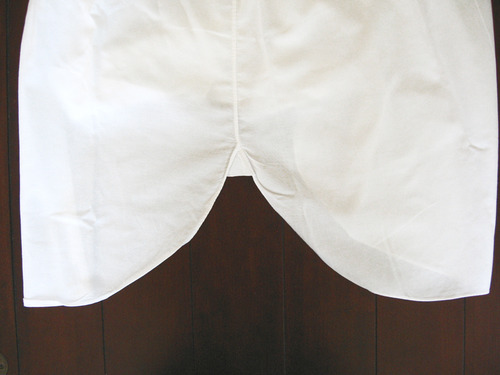
Next is a pink candy-striped OCBD from the 1960s. This piece arrived to me in near tatters. The right side seam, for example, is busted and frayed, and the collar is so worn down that the back is falling apart. On the upside, because of how the collar has broken down, you can see that there’s no interlining inside. If you were to cut open almost any OCBD today, you’d see a strip of fabric inside the collar used to make it more “behaved.” Brooks does this nowadays as well, but the originals were unlined and incredibly soft. The lack of interlining also meant a “messier” looking collar. Terrible for the modern man who wants control in every aspect of life, but great for people who understand why mid-century OCBDs looked so charming and carefree.

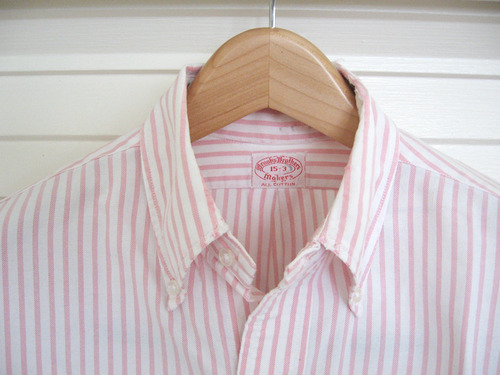
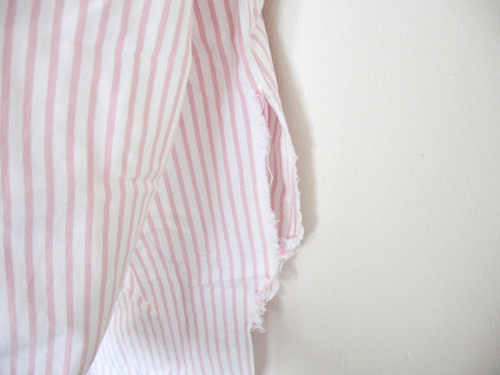

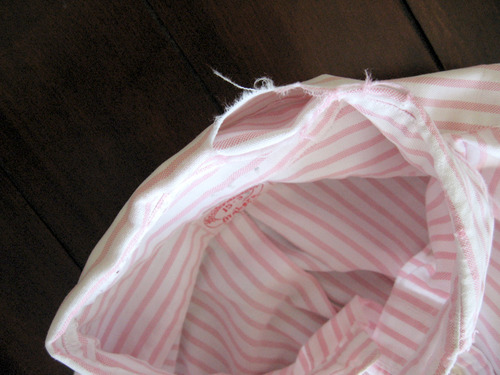
On this 1960s specimen we also see the introduction of a curved chest pocket, which remained on future OCBD designs from this period on forward. The hem is also uniquely curved, though that seems to vacillate with time.
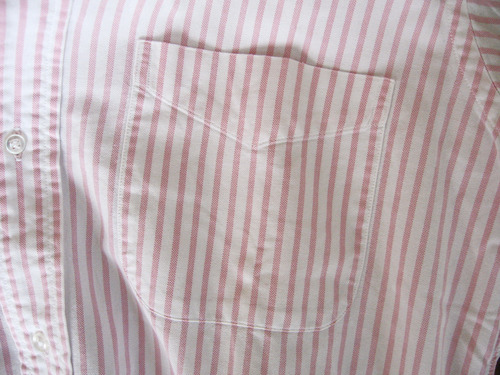
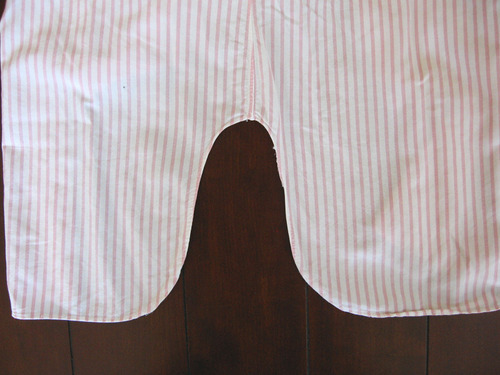
A yellow candy-striped OCBD from the 1980s is nearly identical, save for the more angled curve at the hem.
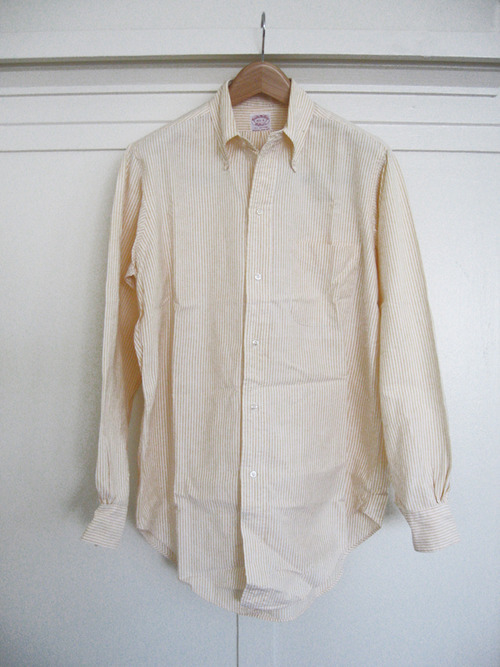
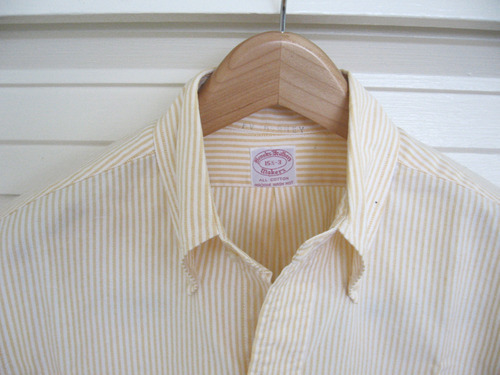
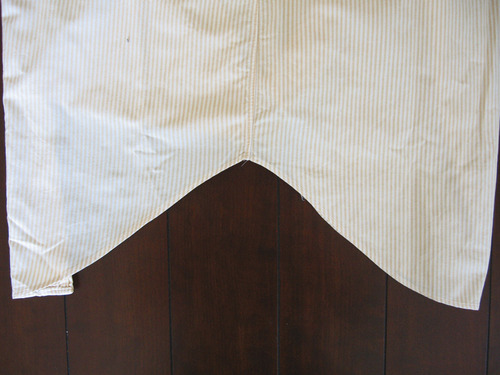
Finally, we arrive at the 1990s, when an additional button was added, to help keep the front from gaping when the collar naturally shrunk over time. This is design has more or less remained the same till today.
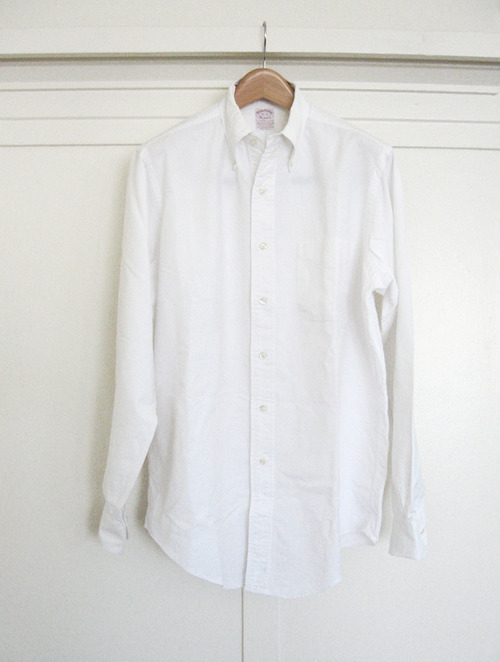
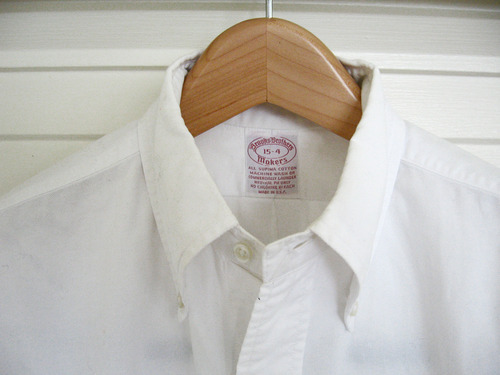
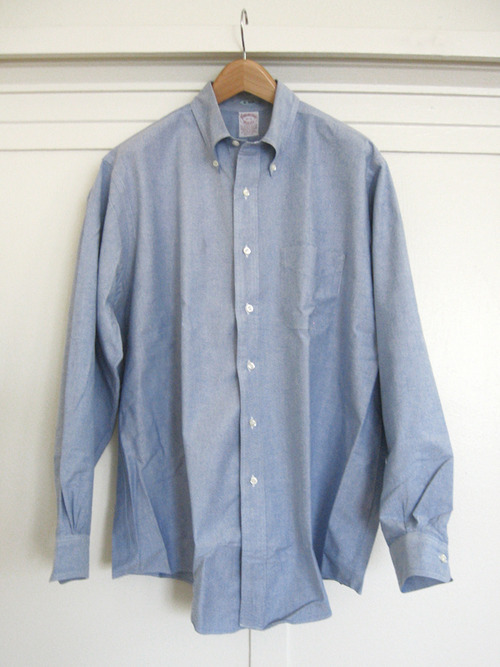

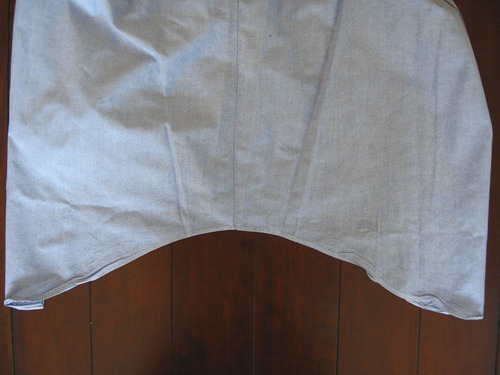
From photos alone, it would seem that the original OCBD has largely remained unchanged, save maybe for the transformation of the pullover to a coat-style shirt, the addition of a chest pocket, and the slow addition of buttons from five to six and then eventually to seven.
This is partly true, as many things that have been retained. Obviously, there’s still the iconic button down collar, with two buttons to secure the collar tips, which originated when polo players needed some way of keeping collar points from flapping into their faces. Just below the short of the yoke (which always seemed to measure about one and a half inches on a 15.5 size shirt), there’s always the beginning of a box pleat (with no locker loop) that ran down the middle of the back. This would go all the way to the waist, where the pleat would then expand into the fullness of the shirt tail. There’s also always a fold over placket at the front, to help keep the button line straight, pleated sleeves (as opposed to shirred) with no gauntlet buttons, and a uniquely off-centered cuff button (though this style seems to be slightly mitigated on later shirts).


The off-center cuff button is a stylistic holdover from when men who would write with quill pens. Since they didn’t want to get ink on their shirts, they’d fold back the cuff on their Brooks Brothers sleeves just a bit, which a slightly higher, off-center button design allowed.
However, a lot has also changed. At the heart of it, sometime either in the 1990s or shortly after, Brooks added an unfused interlining to their collar. This made them slightly heavier and more “behaved.” The collar leafs didn’t wrinkle as much or change with the wearer’s position, and the collar towards the back didn’t rumple from the bulk of the tie underneath. The cut of the collar itself has also been modified over the years. In a February 1926 issue of Men’s Wear, one author described a sized 15.5 Brooks OCBD as having:
“[C]ollar points measure three and one-half inches in length, buttons placed three quarters of an inch from the tips and three and one quarter inches apart. At the top of the collar is a half inch space to permit the high set of a cravat knot. […] For the neckband, there is simply an additional inner and outer strip of the fabric. This band measures one and one-half inches in back and one inch in front, although the double thickness of the collar extends up another quarter of an inch all around.”
This may seem like absurd accounting, but the author was trying to, in his words, give “some measurements and features that make this shirt more than just a shirt.” Undoubtedly, it was talking about how the collar rolled and looked when buttoned down.
These measurements have largely remained the same, except with some minor adjustments. In the 1940s through the 80s, for example, the collar tip buttons were set about a half inch further apart. And today, we have them set back to their original 1929 style, but the collar tips have shrunk about a quarter of an inch. These all don’t sound like much, but when the total measurements themselves are one to three inches, such changes really affect how the collar looks.
Not to be wistful about days gone by, but there is something uniquely special about these “Golden Era” oxfords. Their particular proportions and collar constructions seem to give them an enviable roll – something like two angel wings – when the collar points are secured. They were particularly comfortable and carefree, but still allowed the wearer to look educated, well-mannered, and professional. It’s a bit hard to tell that just from photographs of shirts hung on hangers, but it’s rather evident whenever you see a photograph of someone wearing a Brooks button down during the early- to mid-century.
Brooks Brothers’ oxfords cloth button downs were, and continue to be, a hallmark of classic American style. When they were introduced, they revolutionized how men dressed. Not only because of their uniquely soft and comfortable collars, but also because they were the first ready-made, attached collar shirts. They also signaled the beginning of a uniquely casual American style of dress, one that Brooks would pioneer for the next seventy-five to eighty years. In the history of men’s clothing, there’s perhaps never been a shirt that’s been so beloved by so many for so long.
* Special thanks to Ethan, Mariano, and Giuseppe for their kindness in lending me these shirts for so long, and to Kelly at Brooks Brothers for helping me date them.